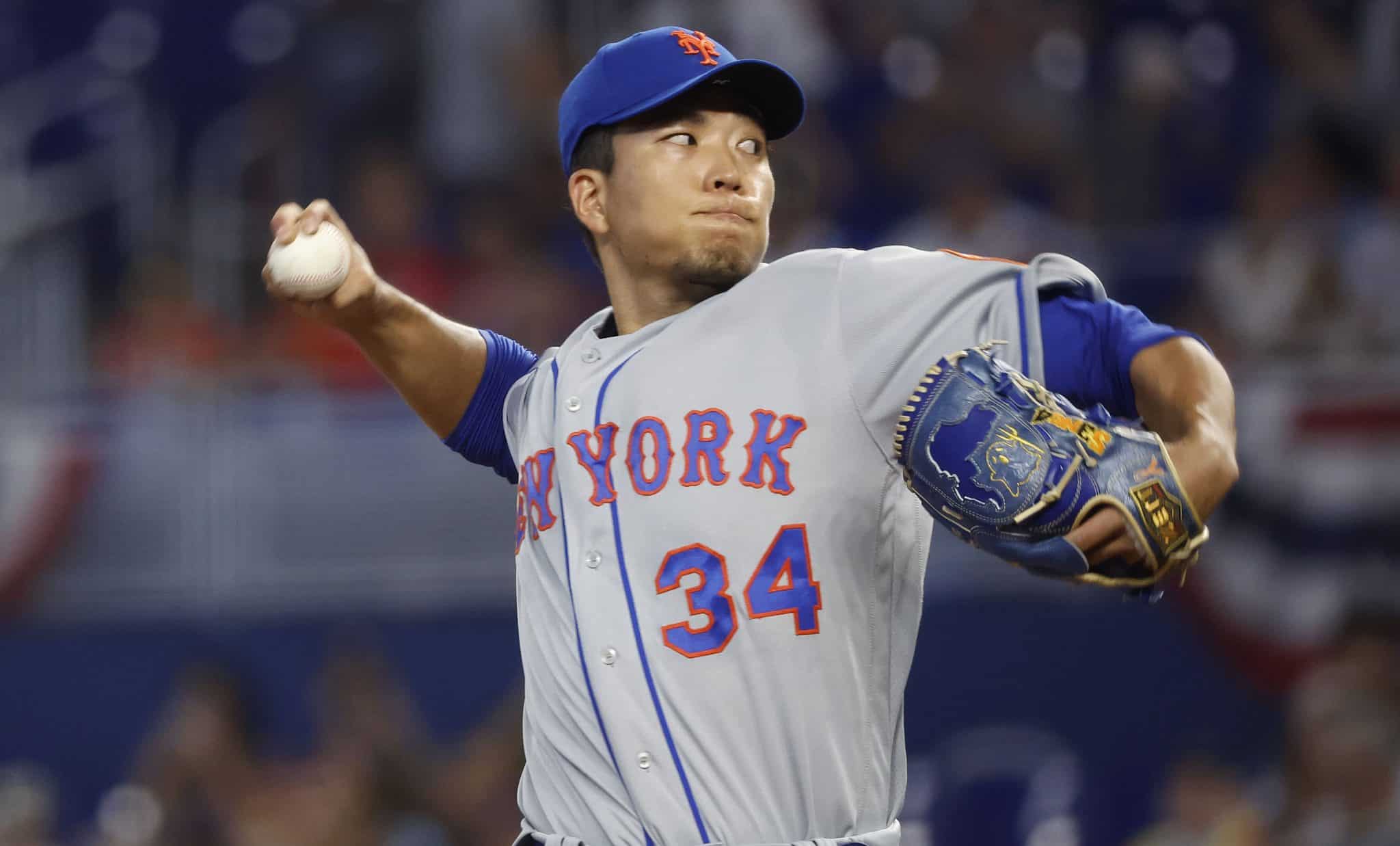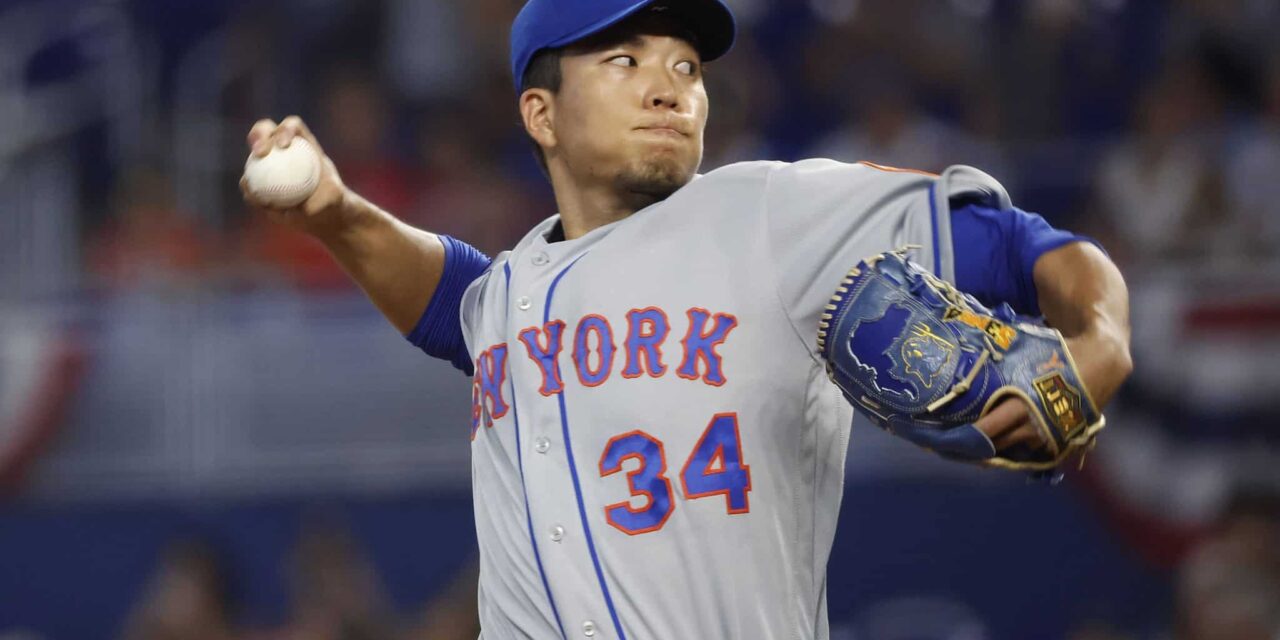
Photo via USA Today
There was always going to be a transitional period for Kodai Senga. The Japanese-born pitcher didn’t expect to be dominating right out of the gate, and he said as much after his latest shaky start against the Giants. Yes, he’s taken Major League Baseball by storm with his “ghost forkball,” but it would be presumptuous to assume that his rookie season wouldn’t come without bumps in the road.
In his first two starts against the Miami Marlins, Senga allowed just two runs on six hits through 11 ⅓ innings pitched with 14 strikeouts and six walks. He displayed how devastating his arsenal of pitches can be and energized a New York team that hasn’t gotten much of its starting pitching thus far.
Since then, Senga has been hit and hit hard.
In his past two starts, coming against the A’s and the Giants, he’s allowed a combined eight runs on 12 hits with 11 strikeouts and eight walks. Senga has also allowed a pair of home runs in each of the last two games.
Not only would a strong start Tuesday catapult Senga in the right direction, but the short-handed Mets are in dire need of a starter going beyond the fifth inning. Senga himself has had trouble with that, as one of his two discernable issues thus far has to deal with pitching deeper into ball games. The other has been the use of his secondary pitches.
Senga is not fooling opposing hitters with the use of his sweeper and cutter. According to Baseball Savant, when Senga uses his sweeper, which has been 17.8 percent of the time through four games, hitters are batting .400 with four hits (three home runs) in 12 plate appearances. Senga’s cutter hasn’t been as ineffective, but he’s still allowed five hits in 18 plate appearances and has just one strikeout with that pitch.
Those pitches just aren’t as effective as his fastball and forkball. Senga has struck out 17 batters with his forkball and seven with his fastball. He has a 54.1 percent whiff rate with his forkball and just a 9.1% whiff rate with his sweeper. Those results speak for themselves; perhaps his secondary pitches aren’t as major-league-ready as his others.
But, this is still a guy who can, has, and will get hitters to swing and miss.
All of the home runs that Senga has allowed have come in the fourth inning and beyond. In fact, three of his five allowed home runs have been hit in the fifth inning. Senga’s ERA has ballooned to 12.27 in that inning alone through four starts. He’s only reached the sixth inning in two of his starts, but has also run into trouble there as well.
The West Coast road trip is one that he’d like to have back. But it’s also an opportunity for Senga to dig deeper, as he works to become a dominant pitcher at this level. Right now, the Mets need Senga to not only right the ship and pitch deep into Wednesday’s game against the Nationals, but also help end a three-game losing skid.
Since Joey Lucchesi’s absolute gem on Saturday, David Peterson, Tylor Megill and Jose Butto have combined to allow 13 runs on 17 hits in just 13 2/3 innings pitched. Only one of those starters — Peterson — has managed to last five innings, but that was out of pure necessity.
Getting past the bugaboo that has been the fifth inning would be huge for Senga and the Mets. The bullpen is well-rested besides the likes of Jimmy Yacabonis, Tommy Hunter and Adam Ottavino, who all pitched on Tuesday, but it would certainly behoove Senga to bounce back from two shaky starts in front of a home crowd on Wednesday. Righting the ship against Washington would mean that much more for a Mets ballclub that will be without a full 26-man roster — thanks to Max Scherzer’s 10-game suspension — until Monday.
















